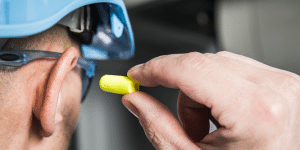KEY TAKEAWAY: Resilient employees are more productive, innovative, and effective in the workplace. Here are 5 ways to build your team’s resilience in the workplace.
Jump Ahead
Employers have a heightened awareness of the critical importance of resilience in dealing with physical, mental, and emotional strain as well as workplace-related stress. The return to work and the future of working could serve as a further test of your team’s resilience.
However, high levels of resilience are critical when it comes to better outcomes for people and teams. It is what allows people to be positive and adaptive in the face of significant adversity. It also provides us with the energy to overcome substantial challenges, whether they are personal or professional.
This is one of the reasons that companies are steadily increasing their investment in wellness programs. Studies have demonstrated that investment in these types of programs directly correlates to employee resilience. An increased number of companies are offering wellness initiatives and an increased number of workers who witness these initiatives in action means a better likelihood of resiliency. Unfortunately, only 30% of Canadian workers currently consider themselves to be resilient. Building resilience involves a complex set of factors, including wellness and health promotion programs, all focused on creating a connected and supportive workplace.
Here are five ways you can help build your team’s resilience in the workplace.
1. Give your team agency
Nothing fuels a sense of resiliency more than the feeling of control over a situation. Give your team members the belief that they can affect the outcome of what’s going on. Break tasks into smaller, more manageable chunks. Allow for unexpected resets and build expected resets into your team calendar. Celebrate milestones and create a series of kickoffs and benchmarks to highlight success and build excitement.
Be open to suggestions and constructive criticism. Constructive criticism often flows strictly from the top down, when in fact all members of your team may have great ideas for a better or more efficient way of doing something. Provide them with the opportunity to critique and contribute. This empowers your team with a sense of control and creates an open atmosphere in which they too will be more open to constructive criticism.
Encourage individual and team problem-solving. Adaptability is a crucial element of resilience, and by encouraging team members to see problems as something to work through together, you will help build your team’s resilience. Be vocal about the fact that that problem-solving takes time, and you may have to test out more than one approach, but there is always a way over a roadblock.
2. Create support systems
Robust support systems are critical to resilience. This starts with having a solid network of company supports in the form of workplace benefits, policies, programs, and initiatives focused on well-being. However, there are other equally essential supports critical to building a resilient team.
Initiate opportunities to strengthen your team bonds. While it can be a challenge to organize gatherings outside of work, make them a priority. Try an escape room, meet for drinks after work or even participate in team sports together. Allow your team members to get to know one another. These are the opportunities where team members create the strongest bonds and form a network of support that strengthens the entire team’s resilience.
Team leaders should also serve as a source of support. Model resilient behavior and be open and honest about your struggles. This promotes an environment where others can express their challenges and feel that you will support them when they do. Role model resilience as well and encourage and model a work-life balance that allows resilience to thrive.
3. Foster competency
Work is changing and so too are workplaces and workforces. For older employees, that can translate into increased uncertainty. You can help both teams and team members by focusing on reskilling and upskilling rather than replacing workers. Helping your employees prepare for these changes can make your team more adaptable and resilient in other areas as well.
Younger generations are also struggling in the workplace. The Business Council of Canada reports that 75% of employers have higher expectations of new graduates than five years ago. Many recent graduates are lagging in human skills, and individuals from Gen Z are also self-reporting the lowest resiliency rates. Increasing guidance, improving work-life balance, and providing work that team members see as meaningful can all help build resiliency in the youngest members of your team. Consider a mentor program that will provide support and guidance and act as a sounding board for new staff.
4. Take your team’s pulse regularly
Provide opportunities for your team to give feedback and relay how they are feeling. This is excellent practice at the individual, team, and organizational levels, and the aggregate data you gather can help inform decision-making. Use surveys or technology to collect data and then discuss findings, issues, and solutions with the team.
5. Leverage technology
The pandemic posed both challenges and opportunities for companies to embrace technologies to enhance resilience. Companies use technology for everything from promoting wellness initiatives to offering individualized support to creating unique options for team gatherings. SureHire’s EQ Resilience Solution is a science-based tool that allows you to quickly assess employee resiliency, allowing for early interventions and support. You can also leverage it to gather aggregate, anonymized data to help you with critical decision-making.
Building resilience translates into more robust, more effective, and more productive individuals and teams who are consequently equipped to meet all challenges, now and into the future.
You May Also Be Interested In…
- Do You Have Reasonable Suspicion?
 Employers cannot initiate reasonable suspicion testing without first going through the 5-step process. Reasonable suspicion training provides critical information about how to initiate reasonable suspicion testing, including the 5-step process and other tools that employers can use to help manage the misuse of alcohol and drugs in the workplace.
Employers cannot initiate reasonable suspicion testing without first going through the 5-step process. Reasonable suspicion training provides critical information about how to initiate reasonable suspicion testing, including the 5-step process and other tools that employers can use to help manage the misuse of alcohol and drugs in the workplace. - An Employer’s Guide: What You and Your Employees Need to Know About DOT Drug & Alcohol Testing
 When implementing or maintaining DOT Drug & Alcohol testing, there are key areas that employers should consider.
When implementing or maintaining DOT Drug & Alcohol testing, there are key areas that employers should consider. - SureHire Occupational Testing Acquires COHR Health: A Positive Step Towards Safe, Healthy, Productive Workforces and Communities
 We are thrilled to announce that today, May 6, 2024, SureHire Occupational Testing has officially acquired COHR Health, a well-known leader in occupational health services. Read on…
We are thrilled to announce that today, May 6, 2024, SureHire Occupational Testing has officially acquired COHR Health, a well-known leader in occupational health services. Read on… - Occupational Testing Use Case – Mining
 In this case study, we will explore how mining companies can use various types of occupational tests to reduce Total Recordable Incident Rates (TRIR) long term.
In this case study, we will explore how mining companies can use various types of occupational tests to reduce Total Recordable Incident Rates (TRIR) long term. - 9 Strategies to Keep Workers Cool on Drilling Sites During Hot Summer Months
 This article delves into strategies to keep workers cool and safe on drilling sites during the hot summer months.
This article delves into strategies to keep workers cool and safe on drilling sites during the hot summer months. - Hearing Conservation Basics: How to Manage Occupational Noise
 Learn how to proactively mitigate occupational noise risks and help prevent NIHL among workers.
Learn how to proactively mitigate occupational noise risks and help prevent NIHL among workers.

